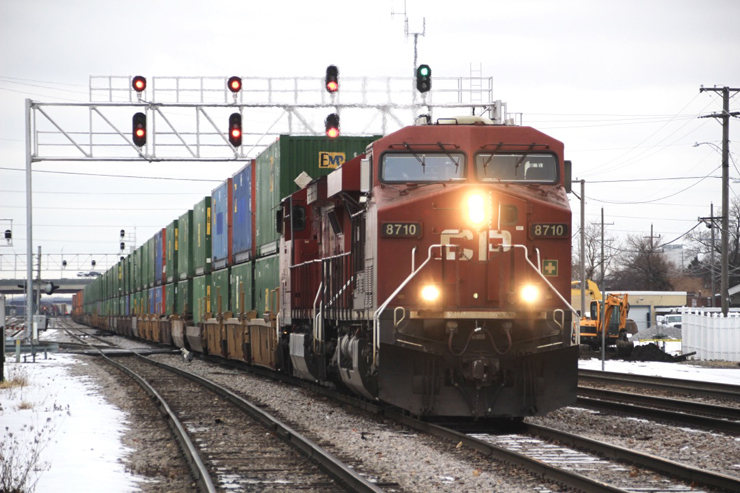
WASHINGTON – The Canadian Pacific-Kansas City Southern merger will snarl rail traffic in Chicago, particularly at a key junction where CP operates on trackage rights over Canadian National and Metra, CN has told federal regulators.
CP says the merger will generate significant growth in intermodal and automotive traffic that will be sorted at its Bensenville and Schiller Park terminals. But its “sketchy operating plan” does not fully account for increased traffic east of Bensenville Yard, CN told the board in a July 12 filing.
“Such under-projections would be a serious problem in light of Applicants’ failure to plan any capital improvements or other mitigating action necessary to address the costs and added congestion of an increase in trains,” wrote Derek Taylor, vice president of transportation for CN’s Southern Region.
To get its traffic from Kansas City to Detroit and Eastern Canada, CP must use the Belt Railway of Chicago and the Indiana Harbor Belt to reach its trackage rights over Norfolk Southern to Detroit and its haulage rights over CSX to Buffalo, N.Y.
Traffic will increase at Schiller Park by 103%, and CP also plans to shuttle an “extensive amount of traffic” between Bensenville and Schiller Park, Taylor says. Canadian Pacific Kansas City’s planned new train 170 between Lazaro Cardenas, Mexico, and Toronto, for example, will drop blocks for Detroit and Saint John, New Brunswick, at Bensenville Yard. Those blocks will then be transferred to Schiller Park to connect with train 142.
The problem, Taylor says, is that this CP traffic will have to run via Tower B12, the junction of Metra, CN, and IHB routes in Franklin Park, near O’Hare Airport.
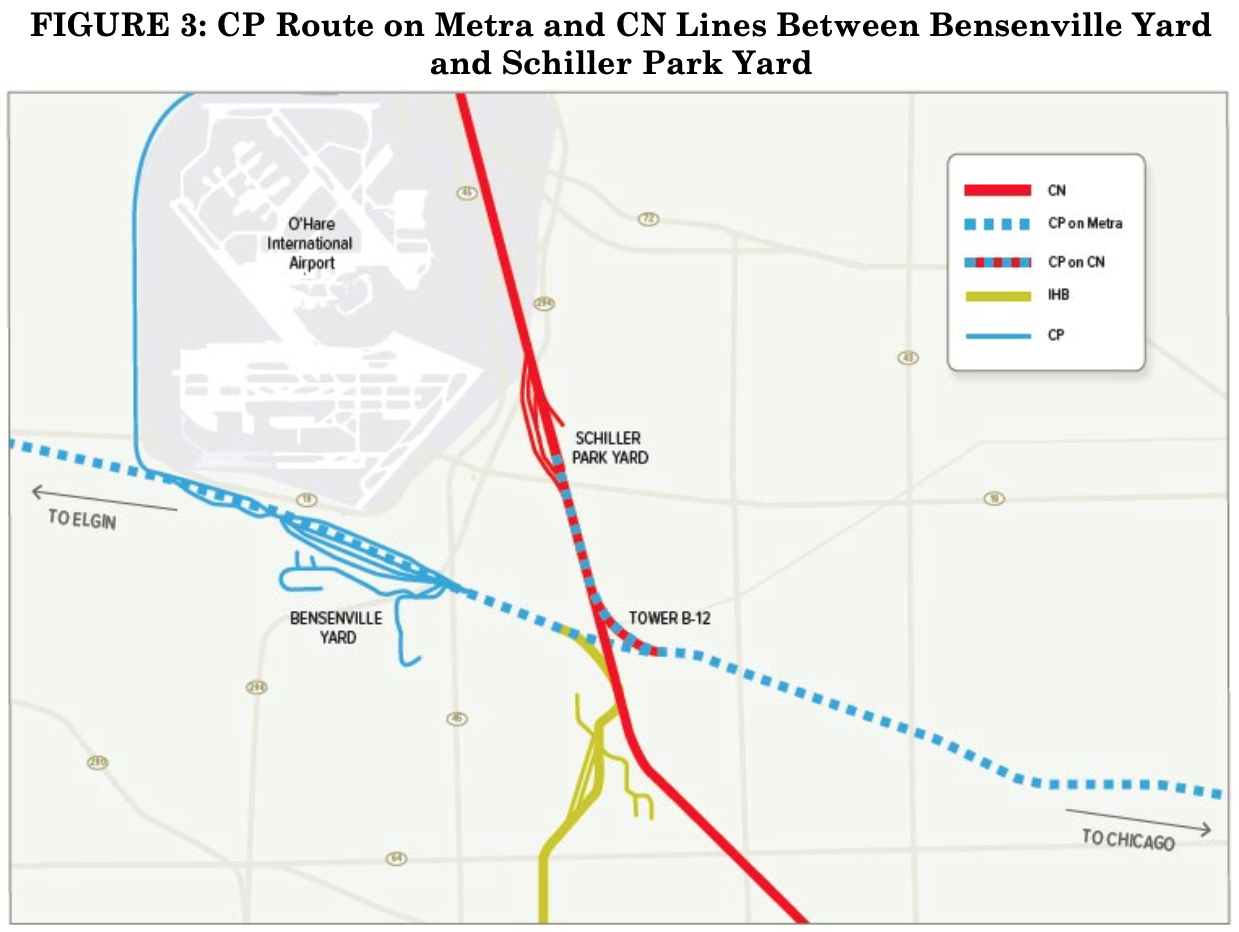
“CP traffic between Bensenville Yard and Schiller Park Yard must first move east via CP trackage rights on Metra’s main line to Tower B12 and then north via CP trackage rights over CN’s line to Schiller Park Yard,” Taylor explains. “… however, there is no connecting track in the northwest quadrant at Tower B12 that would allow a direct, head-in CP movement from Bensenville Yard to Schiller Park Yard. Instead, those CP trains must pull past Tower B12, stop on the Metra main line, and then perform a reverse shove movement back up CN’s line to reach Schiller Park Yard. Such an operation is cumbersome at best and will increase delays on Metra’s and CN’s lines if the Applicants increase the number of trains between Bensenville and Schiller Park Yard.”
Taylor expects significant increases in train traffic east of Bensenville and in and out of Schiller Park. “But Applicants have excluded that segment from their merger analysis, making it impossible to assess the impact on CN’s or Metra’s operations in that area of Chicago,” Taylor wrote.
But CP, in its filing with the board, says CN’s concerns are misplaced.
CP is reconfiguring and expanding Bensenville Yard under an agreement with the Illinois Toll Authority and Union Pacific. The expansion and consolidation of intermodal and automotive facilities at Bensenville will reduce the number of CP trains moving between Bensenville and Schiller Park. And this means that train counts east of Bensenville may actually be reduced after the merger.
Improvements in the yard include longer arrival and departure tracks that will eliminate the need for long trains to double or triple out of the yard, which will help reduce congestion in the area, CP says.
CN used Chicago congestion as a rationale for the STB to order CPKC to divest KCS’s former Gateway Western routes.
The move would allow CN to create the Springfield Speedway, a single-line route linking Kansas City and St. Louis with Detroit and Eastern Canada via Springfield, Ill. CN’s route via Matteson, Ill., and Griffith, Ind., would largely keep Kansas City traffic out of the Chicago terminal.

“Divesting the Springfield Line to CN will provide a competitive routing alternative to a merged CPKC that would avoid additional congestion in Chicago and its suburbs,” Taylor wrote.
CN also rebutted comments from a grain shipper in Jacksonville, Ill., that’s served by KCS today. Bartlett Grain told the STB last month that it opposed a sale of the former Gateway Western routes to CN because it would end the single-line service it currently enjoys for grain shipments to Mexico.
CN noted that Bartlett had previously backed the ill-fated CN-KCS merger, saying it would “bring new, sustainable transportation solutions to our business.”
CN says its proposal — which includes granting CPKC haulage rights over the former Gateway Western lines — would provide seamless operations for Bartlett and other shippers. The only change, CN says, would be a CN-CPKC crew change at Kansas City, where KCS currently changes crews for grain trains bound to and from Mexico.
“Ultimately, all existing and future shippers on the Springfield Line would be able to ship any product destined for the KCS network in virtually the same way they do today,” Taylor wrote. “Not only that, but the shippers would also gain the ability to move their products to additional markets that are served by CN, and to benefit from price and geographic competition between a merged CPKC and CN.”
He also noted that shippers would benefit from CN’s proposed $250 million investments in the routes. CPKC does not plan to increase capacity on the former Gateway Western.
CN presented the board with letters from four companies who say they support divestiture of the former Gateway Western lines to CN. Three of the letters — from PMI Foods, Smithfield Foods, and PSA Halifax, the intermodal terminal operator at the Port of Halifax, Nova Scotia — were nearly identical.
Agricultural shipper ADM said the transfer of the lines to CN would create a new competitive option for single-line service to and from Kansas City. “This new competitive option will be particularly beneficial to agricultural customers and producers across the Midwest,” Christopher Boerm, president of ADM Transportation, told the board.
Affected ADM processing and grain handling facilities are located in Decatur and Cockrell, Ill., and Mexico, Mo. The company also does business with multiple customers on the Gateway Western routes.
CP says divestiture of the trackage to CN would be unjustified, unprecedented, and anti-competitive.
“There is no competitive reason for why such a drastic remedy is necessary, especially since divestiture of a line in the merger context has never been ordered, at least not since the Staggers Act,” CP wrote. Shippers on the former Gateway Western overwhelmingly oppose CN’s request to control the lines, CP notes.
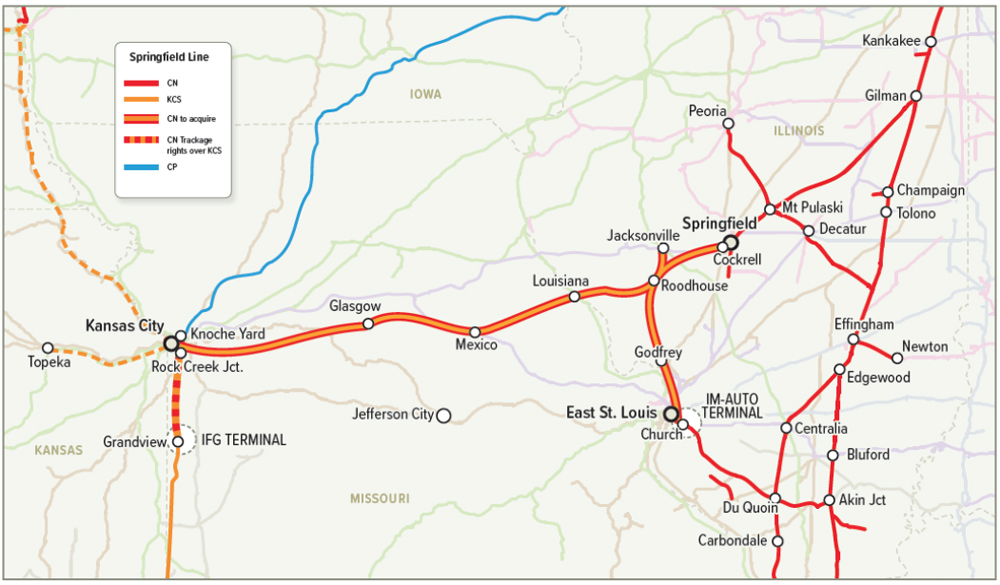






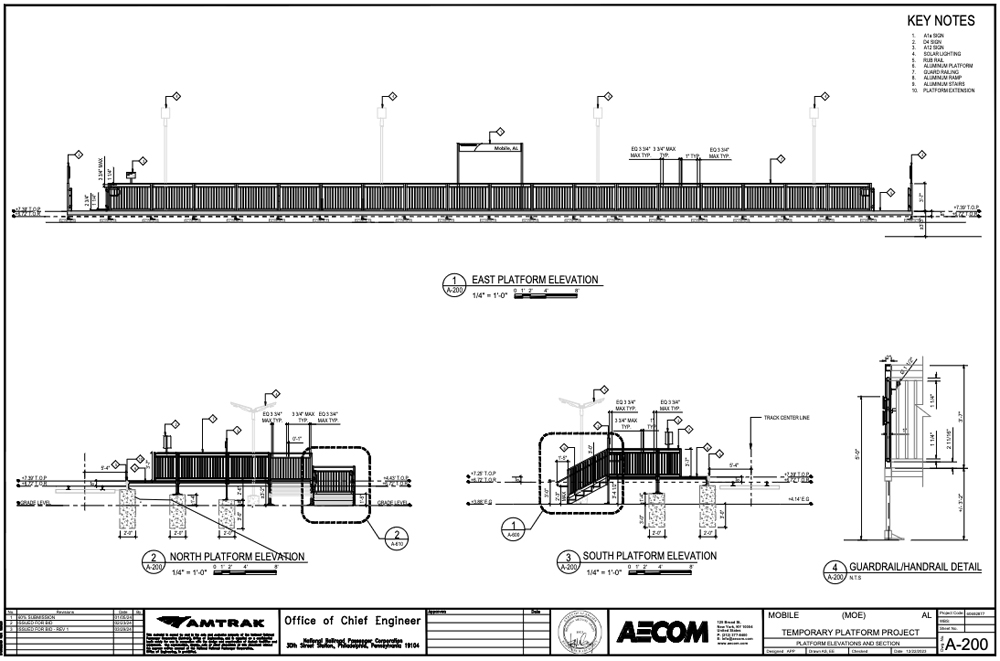
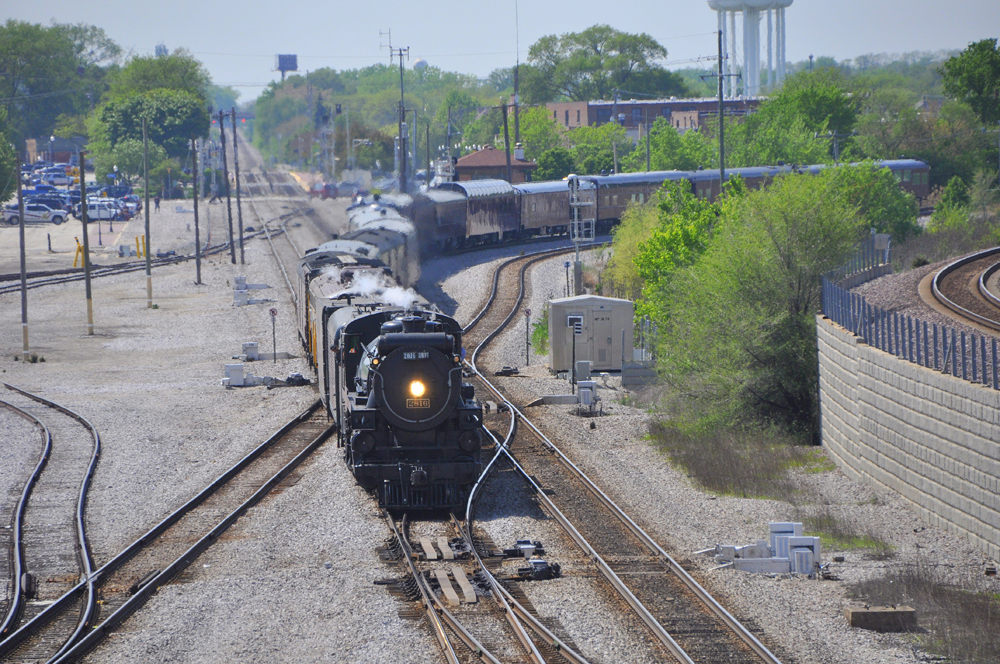
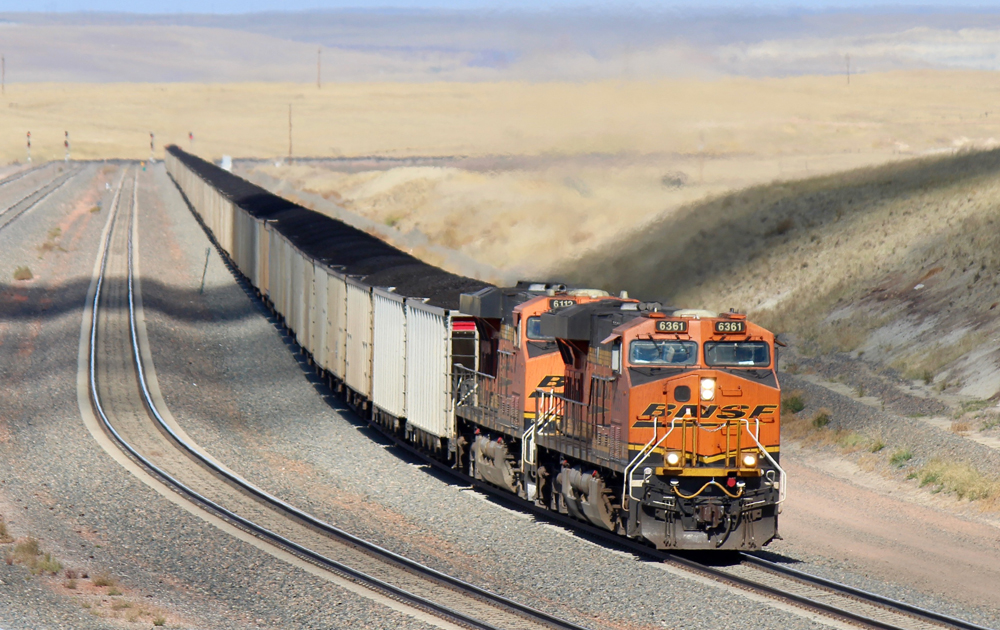
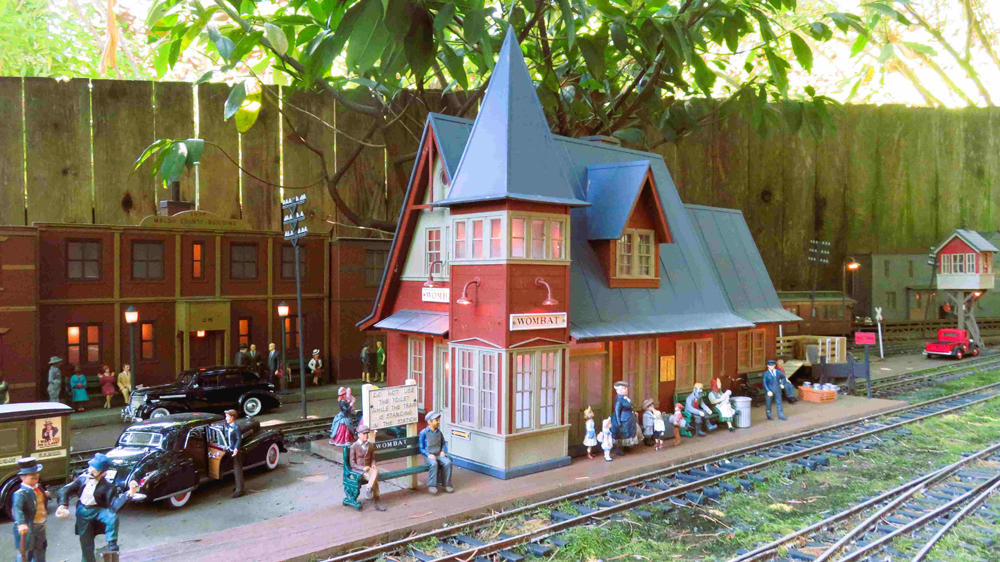




Maybe it’s time for the rail capital of North America to build new lines and improve existing lines that will further ease the growing passenger and freight traffic network around, as is the case with several similar giant railroad hubs in Europe!
Napoleon Bonaparte was right: “When we want we can, when we can we must.”
Dr. Güntürk Üstün
As some of you may recall well, in this great railroad takeover (the proposed $31 billion CP-KCS merger), CN is not the only major railway company to keep on emphasizing its concerns on the issue’s possible collateral rail traffic problems in the Chicago area.
There is also Metra’s continous disaffection.
Of course, all this is not a surprise, while all parties are awaiting the STB’s final decision on the affair!
One last thing! Although Metra opposes the merger, Amtrak supports the proposal and says CP continues to get top marks for causing the least amount of delays to its passengers and that CP seeks to have the two railroads work together to expand and improve passenger service.
Dr. Güntürk Üstün
Then maybe they should have put money into alleviating the congestion that’s already there!
The article brings up an unrelated but significant issue, CP still doesn’t have (and AFAIK, not planning to make) a viable route to eastern Canada that is cleared for double stacks other than paying CSX a toll for 1 pair of trains to/from Buffalo – to CN’s point, if traffic were to grow above their means on the blocks theorized to travel via train 142, Bensenville / Schiller could become backed up with backlogged traffic real quick. Is 170 supposed to go west & via Thunder Bay to reach Toronto?
No. 170 will use CSX to Buffalo, NY/Fort Erie, ON. Then to Toronto.
Via CN or their own trackage, (the old TH&B) then the Goderich sub to Campbellville?
Somewhere CP[KC] must have a list of necessary infrastructure improvements. Close to the top of that list should be a new Detroit River tunnel cleared for double stacks.
CN still bitter about losing? I’ve a 9 year old grandchild that acts more mature than this.
I’m so tired of the circus. CN has bought half of America and it can’t stop whining.
I also mentioned this but mostly jokingly in response to earlier Newswire about this CN request. LOL
Sorry, I misread. The story said a 103% increase in CP trains at Schiller Park Yard. That could mean four trains a day rather than two, etc.
CN all but vacated its Schiller Park line in favor of the EJ&E. Metra is the primary user now. At any rate, no way is Bensenville going to see twice as many CP trains! That is spreadsheet-wishful-thinking.
CN is most definitely blowing smoke here. They already demand that CP interchange at Kirk Yard instead of at Spaulding.
The Schiller Park back up move can easily be addressed by telling CN to stop being an arse and interchange at Spaulding, where CN can take it on the EJ&E in either direction and avoid the Chicago terminal completely by pushing it further west. Isn’t this part of the reason why CN is double tracking from Barrington south to Smith Road?
So if CN is so concerned about Chicago terminal congestion, stop making CP bring it to Schiller, Kirk or Clearing. It’s like CN wants to make Chicago congestion solely a CP issue which is ludicrous.
The Rock across Missouri is gone, as a main line, forever.
The Missouri Eastern operates the eastern 42 miles now.
Yep, I think part of old Rock Island has been converted to a bike trail with another stretch soon to be. As Joel noted, Missouri Eastern head 42 miles east of St. Louis is that is what is left of the old Rock Island main.
…
Curious if anyone thinks that STB will grant CN the trackage that KCS currently has from KC to Springfield/East St. Louis? Seems like a big ask and someone can speak better how trackage arranged in Springfield. However, by looking at the map it is hard to argue that CN by getting the trackage would provide a competitive KC to Chicago and onto Eastern Canadian access. How meaningful would it? Who knows because everyone meets in Chicago already on top of the fact that NS offers direct service to KC & does CSX really care as both BNSF & UP can interchange with CSX in St. Louis already.
Hasn’t that old Rock Island track been dismantled? (Some Missouri reader please reply.)
Well, here’s a question…what about the old Rock Island route between Kansas City and St. Louis? If it is still available, maybe CN could buy the route and rehab it for their use, if they want to get into Kansas City from St. Louis.